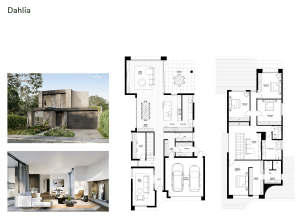Can Anyone Design a Building?
Introduction
Designing a building is a complex task that requires a deep understanding of architecture, engineering, and various other disciplines. It is not a skill that can be easily acquired by anyone without proper training and experience. In this article, we will explore the question: Can anyone design a building?
The Importance of Professional Design
Building design is a crucial aspect of creating functional and aesthetically pleasing structures that meet the needs of the occupants and blend harmoniously with the environment. Professional architects and designers undergo years of education and practical training to develop the necessary skills and knowledge to create safe, efficient, and beautiful buildings.
The Role of Architects and Designers
Architects and designers play a vital role in the building design process. They possess a deep understanding of spatial relationships, materials, construction techniques, and building codes. Their expertise enables them to create designs that consider factors such as structural integrity, environmental impact, accessibility, and user experience.
Architects and designers also work closely with clients to understand their specific requirements and translate them into functional design solutions. They consider the site context, budget constraints, and desired aesthetics to develop comprehensive design proposals.
The Importance of Education and Experience
Designing a building requires a solid foundation of knowledge and experience. Architects typically complete a five-year professional degree program accredited by the National Architectural Accrediting Board (NAAB) in the United States. This education provides them with a comprehensive understanding of architectural principles, design theory, structural engineering, environmental systems, and other essential subjects.

Furthermore, architects often undergo an internship period after graduation, where they work under experienced professionals to gain practical experience. This hands-on training exposes them to real-world design challenges, construction processes, and project management, further enhancing their skills and understanding of the industry.
The Limitations of Amateur Design
While anyone can have ideas for a building design, translating those ideas into a feasible, safe, and functional structure is a different matter. Amateur designers may lack the knowledge and experience required to address critical design considerations such as structural stability, fire safety, accessibility, and building code compliance.
Designing a building also involves a deep understanding of the construction process and materials. Professionals have the expertise to select appropriate materials, coordinate with contractors, and ensure that the design can be efficiently executed within the given budget and time constraints.
The Importance of Collaboration
Collaborating with Professionals
While amateur designers may not have the necessary skills to design a building on their own, they can still contribute to the process by collaborating with professionals. Architects and designers often value input from clients, stakeholders, and users of the building. This collaboration allows for a more inclusive and user-centric design approach, resulting in better outcomes.
By working with professionals, amateurs can share their ideas and vision, and the experts can help refine and translate those ideas into a practical design solution. This collaboration ensures that the final design meets the necessary requirements while incorporating the unique perspectives and aspirations of the client.
Conclusion
In conclusion, designing a building is a complex task that requires expertise, knowledge, and experience. While anyone can have ideas for a building design, the execution of those ideas requires a deep understanding of architecture, engineering, and various other disciplines. Professional architects and designers undergo extensive education and practical training to develop the necessary skills to create functional, safe, and aesthetically pleasing structures.
The role of architects and designers is crucial in the building design process. They possess the knowledge and expertise to consider factors such as structural integrity, environmental impact, accessibility, and user experience. Through collaboration with clients, they translate requirements into comprehensive design proposals that address the specific needs and aspirations of the project. For citibuild construction builder mosman see here.

Education and experience play a vital role in becoming a competent building designer. Architects typically complete accredited degree programs that cover various architectural principles, design theory, and technical subjects. Additionally, internships provide practical experience in handling real-world design challenges, construction processes, and project management.
